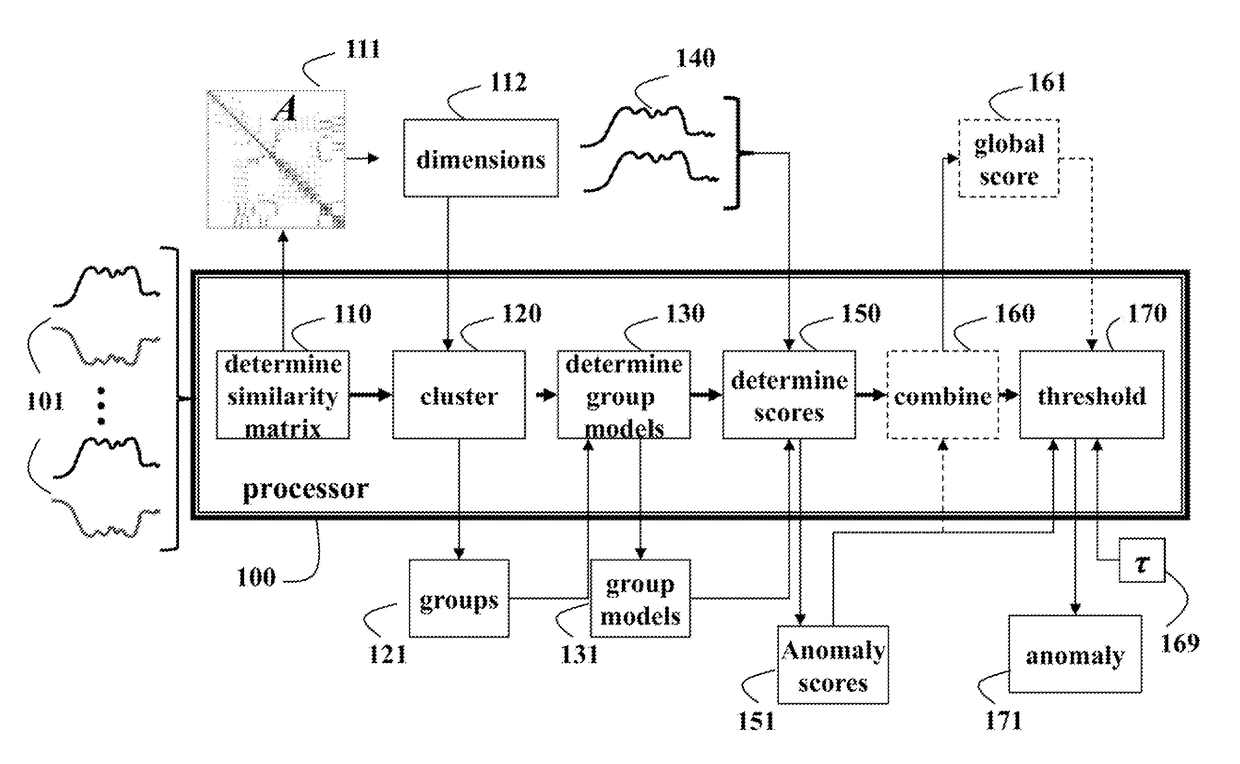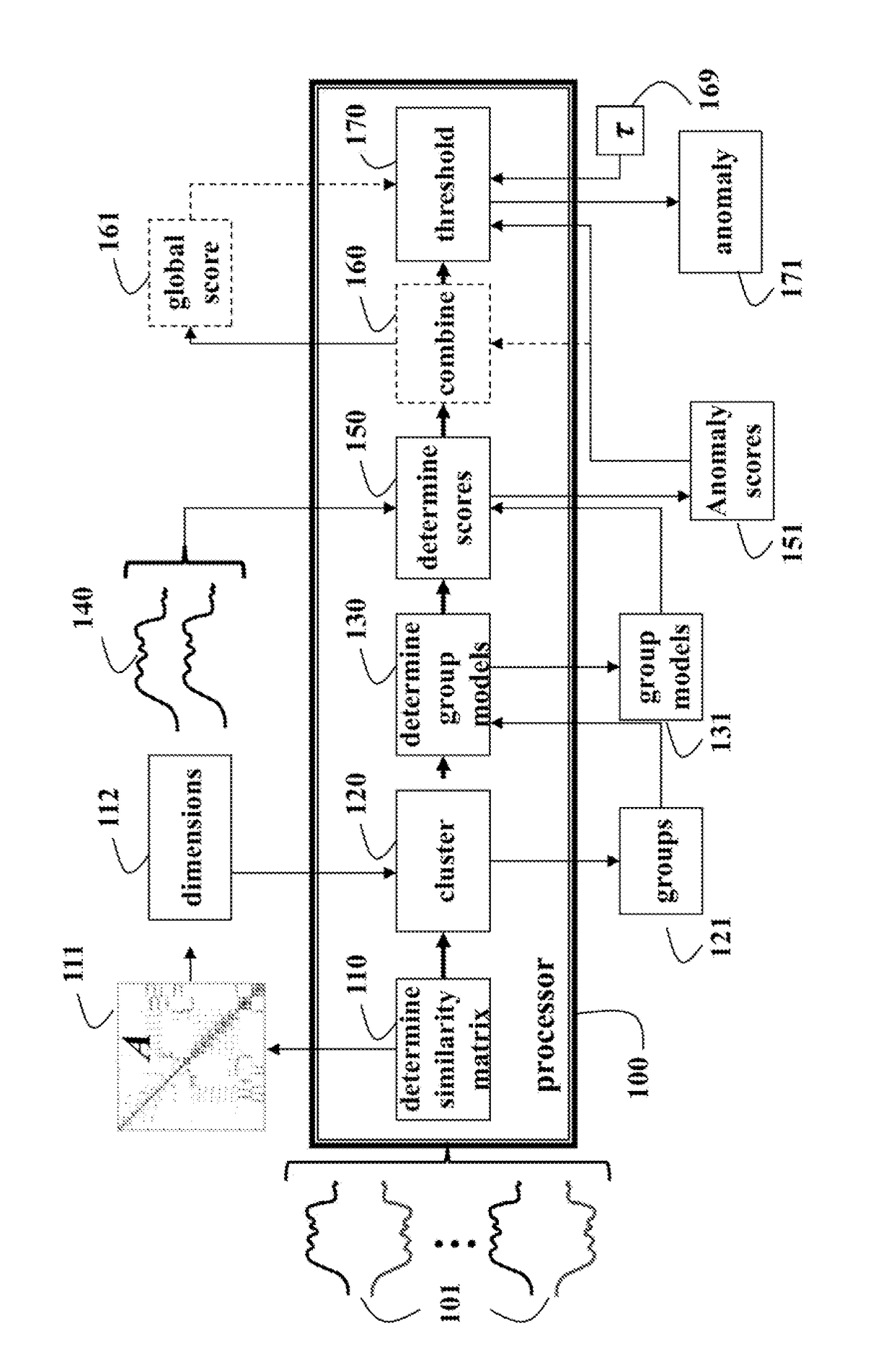Method for anomaly detection in time series data based on spectral partitioning
a time series data and anomaly detection technology, applied in the field of data analysis of time series data, can solve problems such as loose or broken components, unusual operating conditions, incorrect sequence of operations, etc., and achieve the effect of convenient estimation and maintenan
- Summary
- Abstract
- Description
- Claims
- Application Information
AI Technical Summary
Benefits of technology
Problems solved by technology
Method used
Image
Examples
Embodiment Construction
[0020]As shown in FIG. 1, the embodiments of our invention provide a method for detecting an anomaly 171 in real time series data 140. A nonnegative similarity matrix A 111 is determined 110 from pairwise similarities between pairs of dimensions of normal time series data 101. Spectral clustering 120 is applied to the similarity matrix to partition 120 variables representing dimensions 112 of the time series data into groups 121, wherein the groups are mutually exclusive. A model of normal behavior 131 is determined 130 for each group. For the real time series data 140, an anomaly score 151 is determined 150 using the model for each group. Then, the anomaly scores can be compared to a predetermined threshold r 169 to signal the anomaly 171.
[0021]Optionally, the individual anomaly scores can be combined 160 to form a global anomaly score 161, and the global anomaly score can be compared to the predetermined threshold τ169 to signal the anomaly 171.
[0022]The steps of the method can be...
PUM
 Login to View More
Login to View More Abstract
Description
Claims
Application Information
 Login to View More
Login to View More - R&D
- Intellectual Property
- Life Sciences
- Materials
- Tech Scout
- Unparalleled Data Quality
- Higher Quality Content
- 60% Fewer Hallucinations
Browse by: Latest US Patents, China's latest patents, Technical Efficacy Thesaurus, Application Domain, Technology Topic, Popular Technical Reports.
© 2025 PatSnap. All rights reserved.Legal|Privacy policy|Modern Slavery Act Transparency Statement|Sitemap|About US| Contact US: help@patsnap.com



